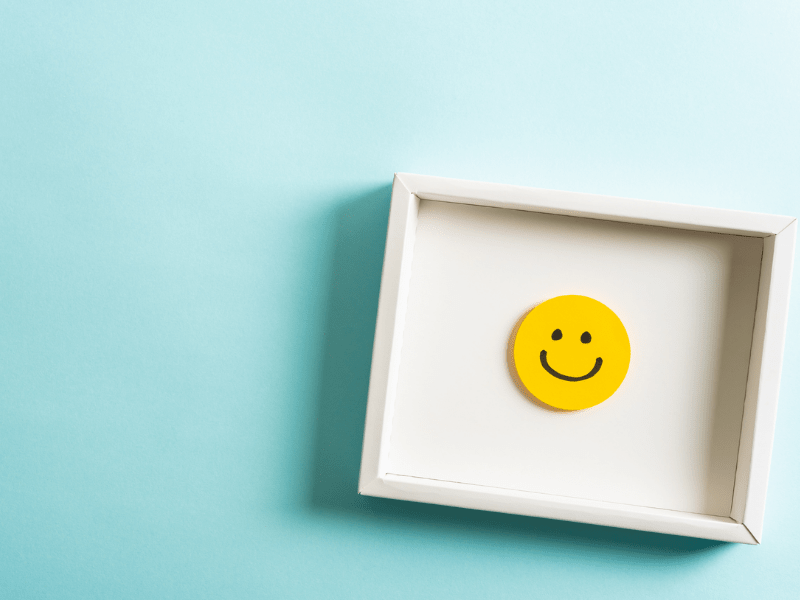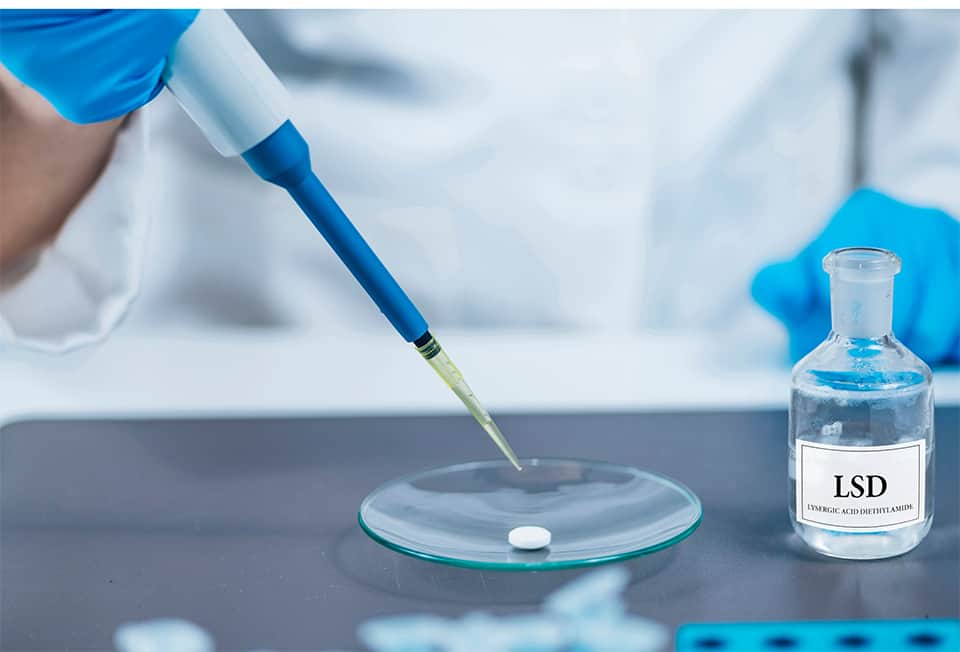
Is the War on Drugs over?
Nixon and the War on Drugs In June 1971, US President Nixon officially declared a “War on Drugs,” stating that drug abuse was the public
Maybe you’re a psychedelic enthusiast who first decided that you liked mushrooms at a party, or a nutritional advocate who recommends them for their health benefits. Maybe you’re just a fan of natural remedies who recognizes the sheer power of mushrooms.
Whatever the case, mushrooms are absolutely fascinating and some of the most interesting organisms on the face of the planet.
Whether it’s the fact that they look and function like massive brain cells, or their ability to adapt to eat just about anything — including radioactive material and plastic — mushrooms are a force to be reckoned with. This article will explain to you ten of the most interesting mushroom facts.
Before you go crazy studying mushroom facts, it might help to have some basic understanding as to what mushrooms actually are. In addition to being plain fascinating, as well as delicious, mushrooms have a lot going on for them.
The actual mushroom is only a small part of the entire fungal organism, known as the fruiting body. The rest of the organism lives underground and is called the mycelium. That means that most of the time, groups of mushrooms that you see popping up in the woods are actually all different parts of the same organism.
We’ll go more into detail about mycelium and its many fascinating properties below when we describe the similarities between mushrooms and the human brain.
Because the term mushroom was never formally defined, it can be loosely applied to a number of different things. Generally, though, things that fit into the ‘mushroom’ category but aren’t necessarily up to standard are often given specific names.
Puffballs, for example, don’t have the same cap and stem that you’d expect from a mushroom. They also barely look like mushrooms. They also lack the extensive mycelial network that defines many mushroom cultures, relying solely on spores for reproduction.
As such, the term ‘mushroom’ is pretty broad. When we’re discussing mushroom facts today, we’ll try to be specific about what type of mushrooms we’re talking about. Amanita muscaria mushrooms (the ones that look like Super Mario would eat them and that would, in fact, get you extremely messed up if you were to eat them) are a lot different from a polypore shelf mushroom attached to the side of a tree.

It would be folly if we didn’t also pay some homage to psychedelic mushrooms before jumping into these facts, especially since many of these facts deal specifically with psychedelic mushrooms. This type of mushroom is so important to certain people that when they hear the word “mushroom,” their first thought is of a liberty cap or a Mexican cubensis magic mushroom rather than, say, a shiitake.
Psychedelic mushrooms have been culturally important for thousands of years, which we’ll discuss below in one of the facts. Many users say that they connect you to the earth, which makes sense. A potent hallucinogen, scientifically proven to activate latent parts of your brain and create new connections where there were none before, grows in the ground.
Why wouldn’t it hope to expand your consciousness and attune it to the rhythm of the planet? In an evolutionary sense, teaching people how to protect and care for the planet would help to ensure the mushroom’s survival.
Aside from providing grounding experiences, mushrooms can provide a lot of cognitive benefits. This is true even when you microdose mushrooms, a practice which people all over the world are starting to practice. When it comes to mushroom facts nutrition is often what people think about, but that’s not the case with Silicon Valley’s best programmers who instead just want details about the best mycelium to microdose.
Mushrooms contain a compound called psilocybin, which is an analog of the much more potent drug DMT. Psilocybin, much like other psychedelics, mostly works through its interaction with the brain’s serotonin system. This interaction produces changes like increased sensory awareness, enhanced empathy, profound thinking, improved creativity, introspection, and self-reflection.
These benefits are tremendously useful to any human being. They always have been, and always will. Psychedelic mushroom trips are not always pleasant or comfortable, but they always contain with them powerful lessons and the potential for significant growth. They are a gift from the earth. Like the fruit the earth gives us to nourish our bodies, the psychedelics the earth gives us nourish our minds, our hearts, and our spirits.
Well, here they are. 10 mind-blowing mushroom facts to feast your mind on. Prepare to get your mycelium blown.

But wait, you say. Mushrooms don’t look like the brain. If there’s one part of the human body that they look like, it’s certainly not the brain.
If that’s what you think, then let me inform you that you don’t know mushrooms well enough. The majority of the actual mushroom organism is located underground. The actual mushroom that we’re all familiar with is just the fruit, also known as the fruiting body.
The underground part, the bulk of the mushroom, is known as the mycelium, or the mycelial network. The mycelial network is a very complicated array of fibers and tendrils that allow the mushroom to communicate. It sends information and nutrients between different parts of itself as well as other organisms in the forest. The mycelium also helps to hold the organism and the soil’s structure.
What’s interesting is that the mycelial network looks almost exactly like the complicated network of neurons that makes up our brain, which is also sometimes referred to as a neural network. Additionally, the function of a neural network and mycelial network is basically the same. They both communicate by sending bits of information to different parts of the organism.

The use of psychedelic medicines is nothing new. Various cultures have been using hallucinogenic drugs for thousands of years. The purposes of these experiences can vary from one culture to the next, but generally, it involves some degree of connection with nature, the spirits, god, or the higher self.
Most people usually think of drugs like ayahuasca or peyote when considering traditional plant medicine ceremonies. However, mushrooms have been equally as important for numerous cultures, including those in Central America and presumably North America, where mushrooms grow in abundance.
Some archaeologists suggest that the earliest recorded date of the use of psychedelic mushrooms comes from a 9000-year-old cave painting. The image seems to depict mushrooms playing a role next to some anthropomorphic figures.

What is often referred to as the largest organism in the world is actually a mushroom, or rather, a massive mycelial network that lives in Oregon. This particular mushroom is Armillaria ostoyae, also known as the honey fungus. This fungus feeds off of conifer trees.
Even though it might not look that impressive from above ground—it really just looks like a small group of mushrooms here and there—researchers have genetically tested samples from mushrooms in a radius of several miles and identified them as the same fungus.
On top of that, this fungus is ancient. Some estimates range as far back as 8,650 years, with more conservative estimates averaging around 2,400 years.

Mushrooms have the unique ability to adapt and evolve to consume just about anything. When a mycelium encounters something unfamiliar or foreign, rather than rejecting it, it forms a bubble around it. A solid cell wall is put in place to prevent the mycelium from damaging itself by absorbing any toxic compounds before it can recognize them.
Mushrooms have been seen consuming plastic, radioactive material, and even cigarette butts. This makes them very appealing for environmental researchers who are interested in repairing some of the widespread damage caused by radiation and garbage.

You think about the story of Santa Claus and it really doesn’t make much sense. It makes even less sense in conjunction with Christianity. That’s because the story of Santa Claus actually has nothing to do with Christianity. It’s a modern interpretation of an ancient Siberian practice.
There are lots of different aspects of Siberian traditional culture that may have lent themselves to the story of Santa Claus.
Sounds about right, no? A mysterious man wearing red and white climbs down your chimney to bring you… magic mushrooms? Christmas just got a little more exciting.

Mushrooms reproduce by spreading spores. However, most mushrooms live close to the forest floor. How can they spread their spores except by producing their own wind?
This isn’t just a science fiction superpower, either. Mushrooms generate wind by increasing the rate at which water evaporates from their surface. The increased water moisture in the air, coupled with the decrease in temperature immediately surrounding the mushroom, creates enough drag in the air to actually pull the spores several inches away from the mushrooms.

This isn’t so surprising when you consider what we discussed earlier regarding how mushrooms look and function like the human brain. The fact that mushrooms are also very beneficial for the human brain is a great example of what herbalists refer to as the doctrine of signatures.
This is a perennial rule that one finds in nature, representative of the spiritual law “as above, so below.” This basically states that the outside image of a thing is representative of its inner contents. In terms of medicine, this means that a plant might resemble the organ that it’s capable of healing.
There are lots of examples of this. Walnuts, for example, resemble a brain and are loaded with brain-healthy omega-3 fats. Trees produce oxygen and look like inverted lungs. St. John’s Wort is explosively bright, like the sun, and brings about a positive mood. Lungwort leaves contain spots that look like a diseased lung and, as the name suggests, it’s often used for respiratory ailments.
And mycelium looks like a neural network. Mushrooms aren’t just good for the brain, but they do excel at improving cognitive health compared to many other natural nootropics.

As if mushrooms weren’t already cool enough, researchers discovered that they can actually survive in space. However, a lot of this hype was the result of an article that was published a few years ago by somebody who clearly had a very limited understanding of both mushrooms and space.
The article postulated that mushroom spores can simply live in the vacuum of space for up to a week. This isn’t exactly the case.
Anything that researchers have sent into the pure vacuum of space has died quite quickly. However, NASA scientists discovered that mushroom spores encased in tin foil can survive in the vacuum of space.
Most other organisms still can’t handle the vacuum and will die, not only from the extreme pressure but because of the unmanageable radiation. It would seem that mushrooms can handle the extreme pressure of the void as long as they are protected from the radiation.
Mushrooms have also shown that they’re extremely adaptable to living on space stations. Astronauts at the Russian space station have had frequent problems with fungi like mold.
One of the reasons for this is because mushrooms don’t have to contend with gravity in space. Rather than having their spores reliant on the wind or the small amount of breeze that mushrooms produce themselves, in space, their spores simply keep traveling until they find somewhere to land. One might even assume that mushrooms are better suited for zero G environments than they are on earth.

It’s only amateur naturalists who refer to mushrooms as plants. They’re actually not. They don’t photosynthesize and they don’t do a lot of the other things that make plants what they are. In fact, mushrooms are genetically more similar to humans than they are to plants.
Researchers have revealed that animals and mushrooms share some genetic ancestry with one another. In other words, at one point, we originated from the same source. Plants, on the other hand, are completely separate.
Mushrooms can also do things that are unique to animals. They might not photosynthesize, but they do produce vitamin D when their skin is exposed to sunlight. Add that together with the fact that a mycelium network looks like a close-up of any other neural network, and you might start wondering whether or not mushrooms are sentient themselves!
Unfortunately, since mushrooms don’t communicate in any sort of languages we understand (although they do communicate very well with all the other plants in their local area), we might not figure that out for a while.

Sporopollenin is the name of the incredibly resilient biopolymer that surrounds not only mushroom spores, but pollen and the spores of other plants as well. It protects the reproductive components necessary for these organisms to carry their genes forward.
The incredible resilience of sporopollenin has astonished researchers ever since its initial discovery. Most recently, completely intact samples of sporopollenin have been extracted from samples of rock that are more than 500 million years old. The incredible strength of this material is most likely responsible for the ability of mushroom spores to survive in space.
Mushrooms are just about the coolest organisms on the planet, and we hope that you’re convinced of that now. If you’re not, then you should spend some time with some magic mushrooms and communicate with them yourself. See what they have to offer and you won’t be disappointed.

Nixon and the War on Drugs In June 1971, US President Nixon officially declared a “War on Drugs,” stating that drug abuse was the public

LSD is often the drug of choice for professionals who say that dropping a smidge of acid gives them the exceptional competitive edge they need.

How journaling could change your life: a new approach to your practice There are so many different methods of journaling. Dream journaling, bullet journaling, gratitude

Microdose psychedelics has become an extremely popular way to boost performance in high-pressure occupations like software coding. Also, individuals who suffer from mental health conditions

Psilocybin is a mushroom-derived compound with a long history of use in traditional rituals, spiritual ceremonies and has been used as a medicine in

Throughout human history, psychedelics have been subjected to all manner of different labels, judgments, and stigmas. For the largest portion of human history, psychedelics have
GET 10% DISCOUNT WITH NOTIFIED ABOUT THE LATEST NEWS AND UPDATES. NO SPAM, WE PROMISE!
FREE Tracked shipping on orders over €250 to EU countries.
Monday- Friday 8.30am- 5pm (CET)
A range of options available
Guaranteed delivery or your money back